Oslo downtown #3 - Aker Brygge and Tjuvholmen
Aker Brygge, from the townhall.
I was down in the city centre of Oslo Saturday, I arrived at Tjuvholmen and left from the same place. It's usually possible to get to and from there without plowing through sea ice.
This used to be a very industrial area, from 1854 to 1982 it was dominated by shipyards and engineering industry - Akers Mek employed more than a thousand employees here. In 1982 the production was shut down.
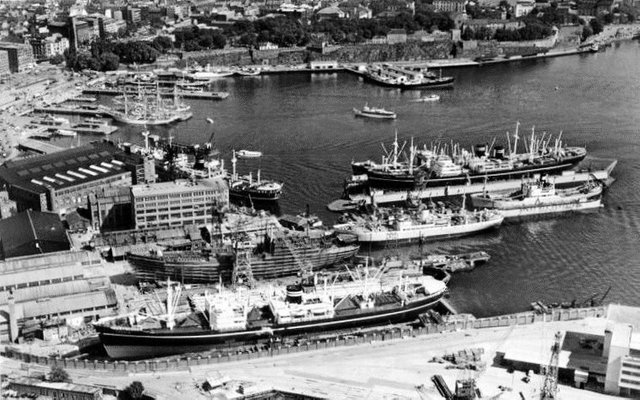
(full image - from wikimedia)
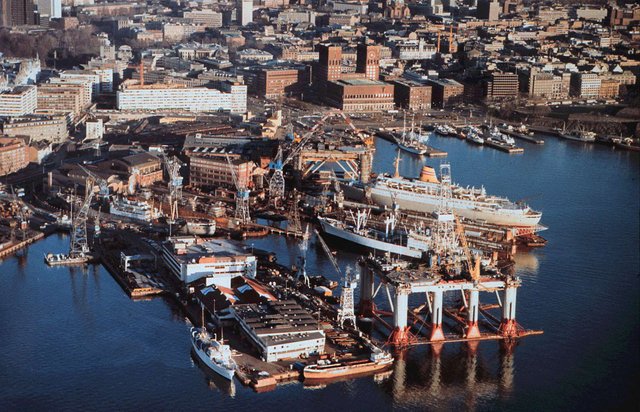
(full image - from http://industrimuseum.no/)
In a highly successful planned gentrification process, the industrial area was remade into an exclusive area with shopping, restaurants, tourism, offices and apartments.
The pedestrian ferries to and from Nesodden lands here.
This is the main entrance, and one of the few places open for car traffic. In this circle there are usually some few taxis waiting for assigments.
The word "saboteur" is usually a quite negatively charged word - but the saboteurs of the second world war are generally regarded as heroes. This is a memorial of the Pelle group. This particular group was lead by a communist, due to the cold war they never got the recognition they deserved, unlike the saboteurs with direct English backing.
The clock would be signalling the start and end of breaks as well as the start and end of the workday. When the bell was ringing, the workers still had three minutes to get prepared, get to the work area and stamp in.
Lekteren (The Barge) is a permanently moored floating outdoor restaurant - and hence the ship is also staying there permanently.
It says "kills and sail - 30 minutes" on the sign, meaning that one can stay there for free for thirty minutes, typically for picking up or leaving crew, family members or guests. Those boats have been staying there for very much more than 30 minutes!
Aker Brygge Marina is the only dedicated guest harbour we have in Oslo - though it is often quite filled up with permanent residents! It's very expensive to stay there as a guest, though if you can't find an employee accepting payment it's free anyway - and in the winter time they can be pretty hard to find! (I once did a best effort, having guests staying in the harbour - called them several times even, trying to get an appointment, but in the end we didn't get to pay and we didn't get to do our laundry).
Despite the area being quite exclusive and expensive (with some of the highest square feet prices in all of Oslo for the apartments), living here in the marina winter time can be quite affordable.
In the channels there are also guest places, for boats being low enough to pass the bridges. This stub (as we can see from the old photo above, this "stub" was used as a dry-dock back in the industrial age) is frozen, but the others were open, some of the places were even with bubbles (a trick to keep harbours free of ice - install some leaky tubes at some metres depth and blow air through them - the bubbles will cause water circulation, which again will prevent the sea from freezing) - however, only one single boat (except my dhingy) was observed on the inside of the bridges. There was an automat for paying the harbour due, and it was NOK 240 for 24 hours. I did not pay, no way I'm going to pay that much for leaving a dhingy behind for some few hours in the middle of the winter.
Having passed that bridge, we've also left Aker Brygge for Tjuvholmen, this area was gentrified much later than Aker Brygge and has different owners. Here is an aerial photo from 1996 of Aker Brygge and Tjuvholmen, before they remade Tjuvholmen.
And here is a more up-to-date aerial (from kart.gulesider.no):
The parking-turned-into-a-construction-site used to be the west side train station. They have only removed the last few hundred metres of rails, the rest of the abandoned line is used for parking trains afaik.
Originally there was one small island here - hence "Holmen" - but the areas have been filled out several times, and new channels have been made, so today "Tjuvholmen" consists of several small islands. When arriving Saturday morning, we came through the small channel going under the Astrup Fearnley museum to the right in the photo.
At the other side there is still some "industrial" harbour left (IPS).
I've been in this area several times, but never noticed until now that the royal yacht is moored up here.
(The photos are not in chronological order; this single photo was taken in the morning when I arrived here together with my 7 yro son)
Finally, leaving from Tjuvholmen ...
There are also quite some photos of Aker Brygge and Tjuvholmen in my Oslo downtown #2-post.
All photos (and more) available at IPFS QmP7Zsdt8zwuDQ1TRqq2BF1ajURXXKj2k3c7Miuph6xtvT, CC by-sa 4.0 license applies.
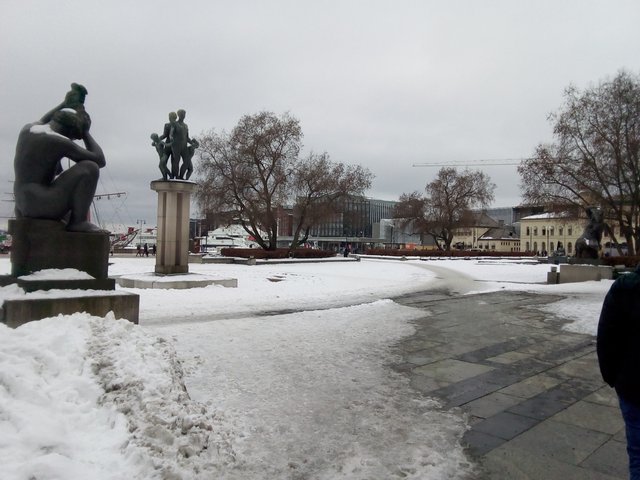
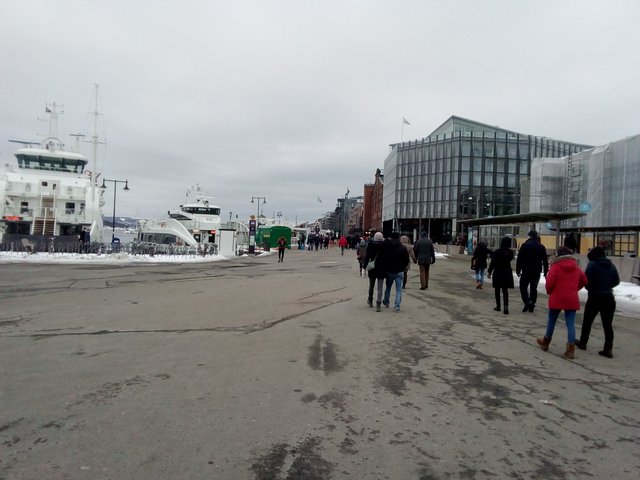
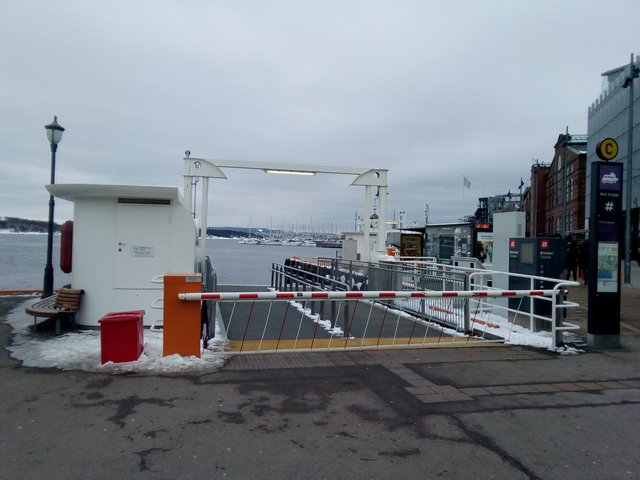
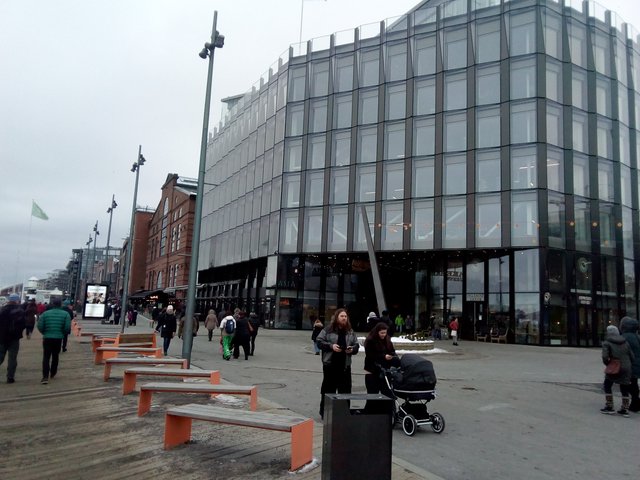
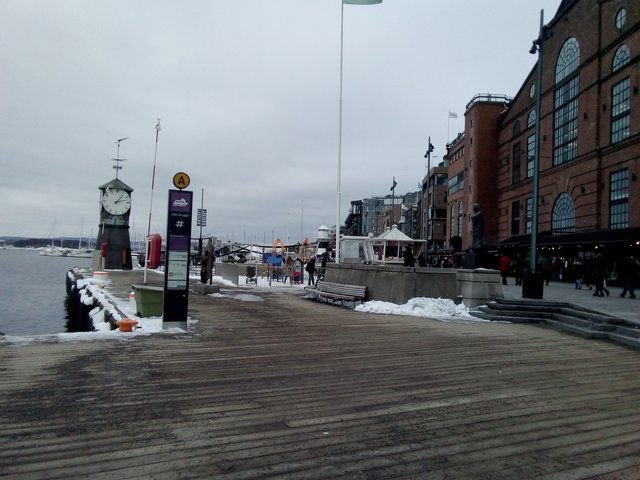
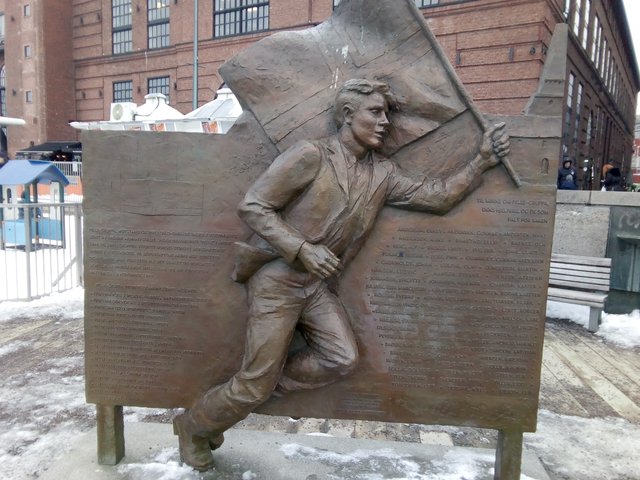
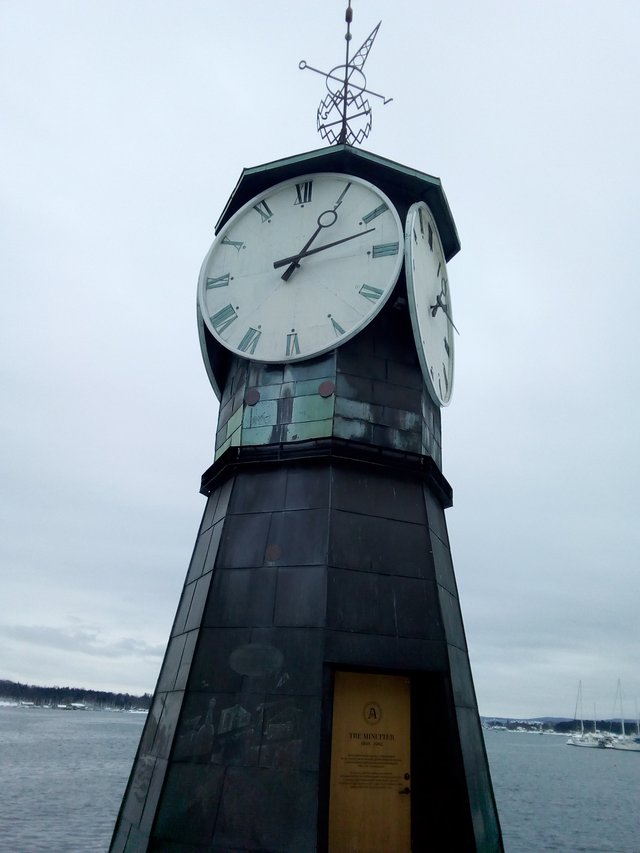
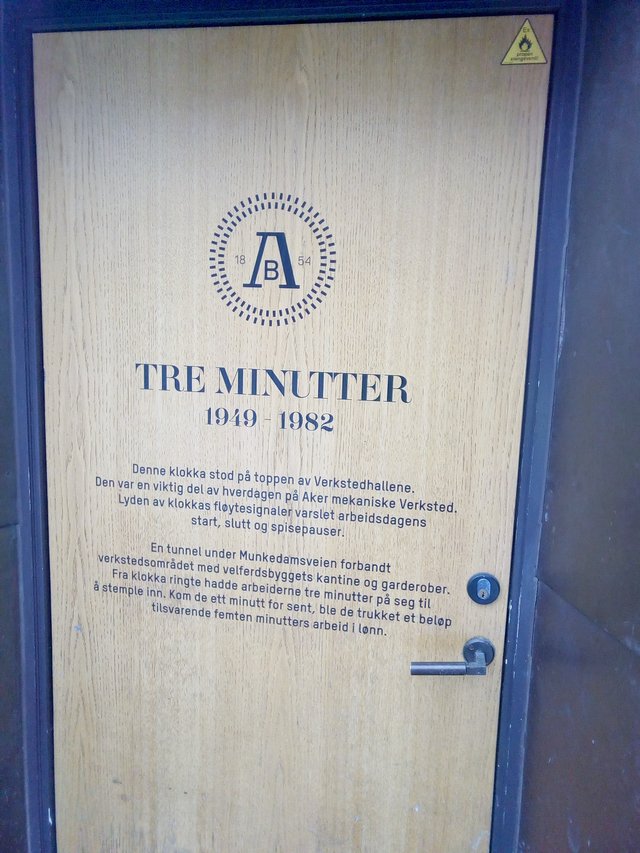
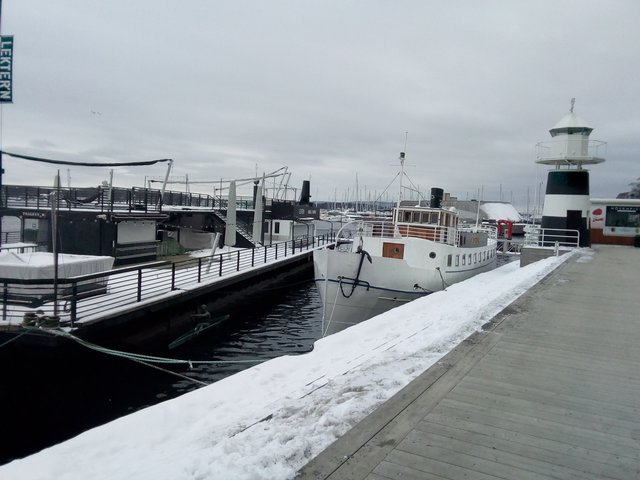

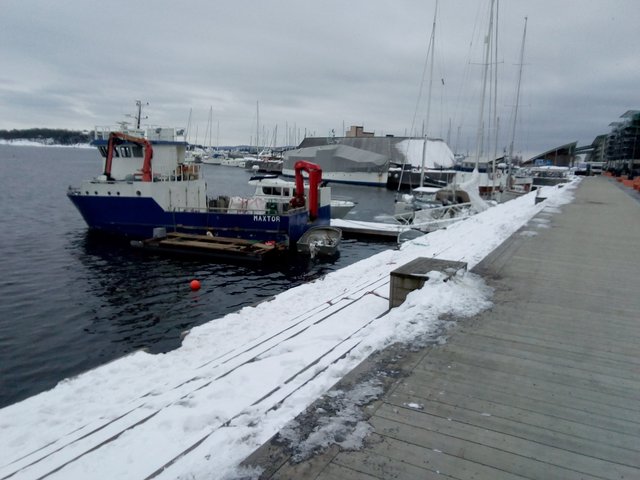
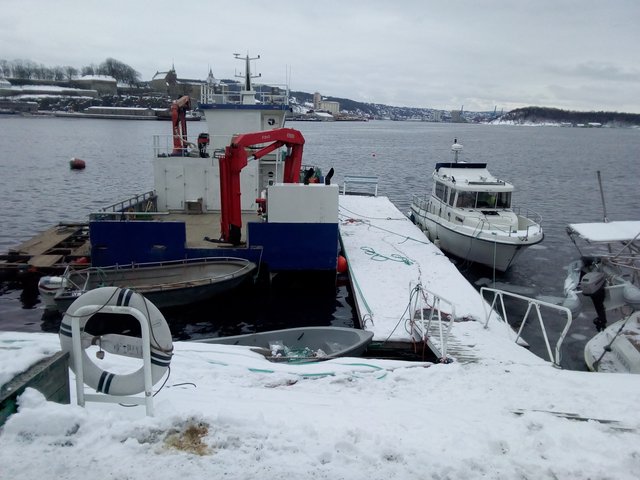
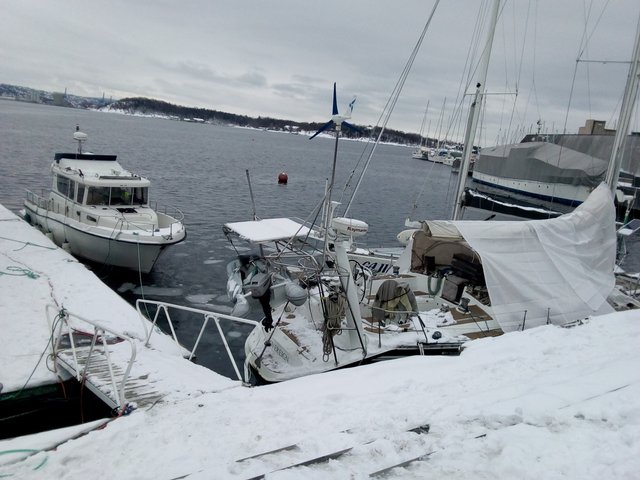
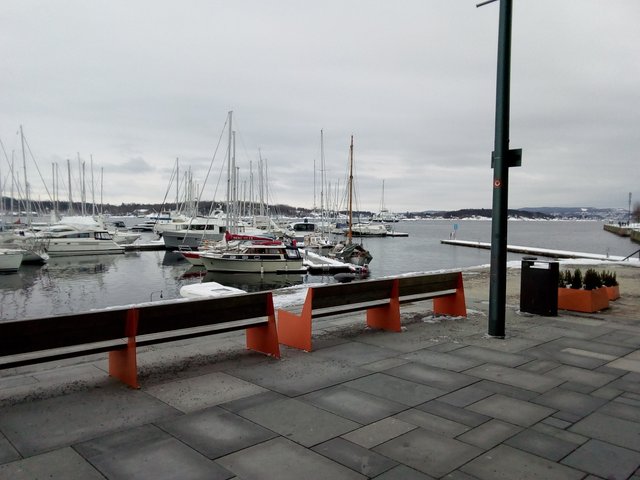
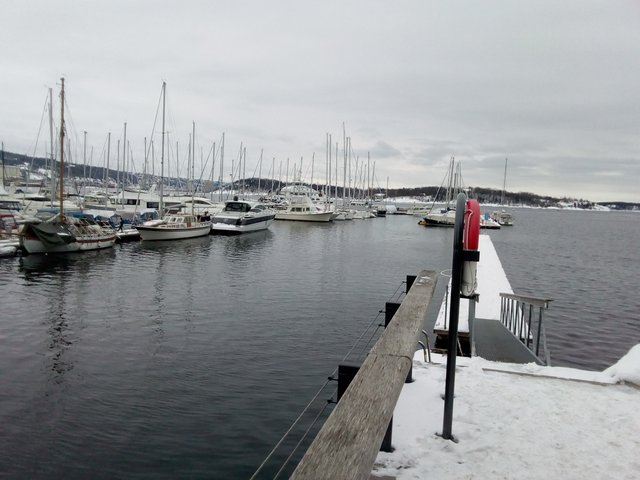
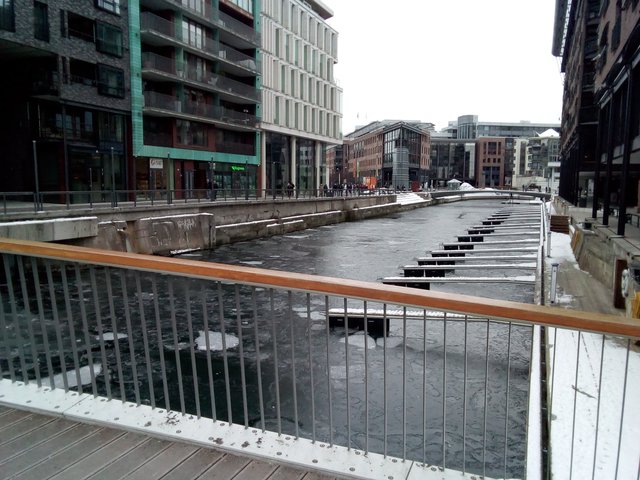
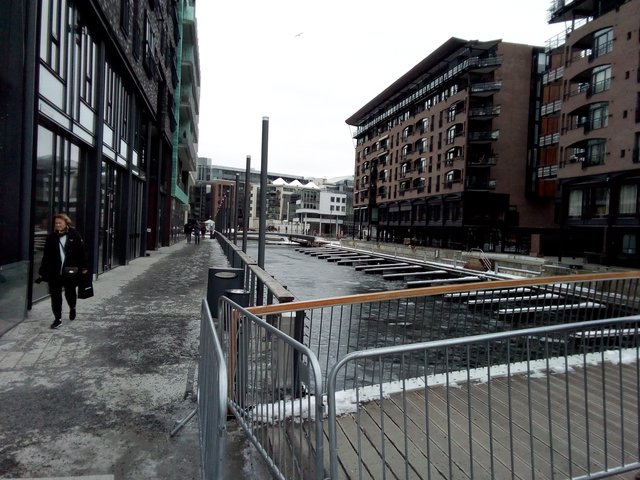
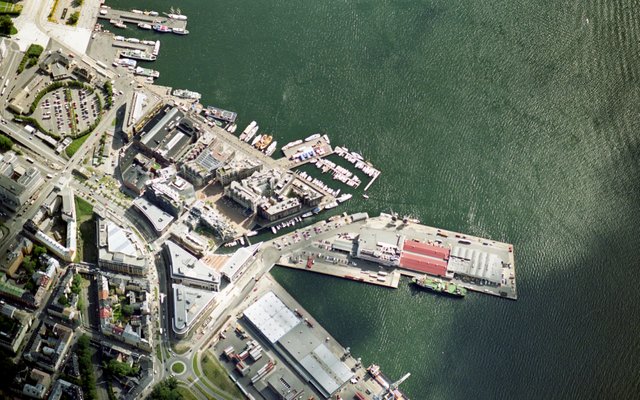

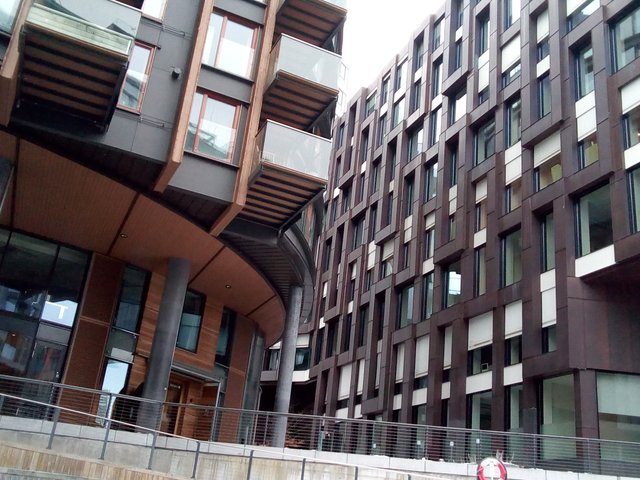
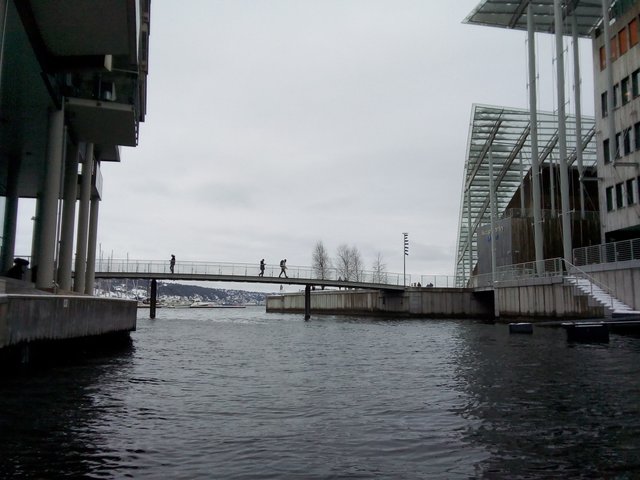
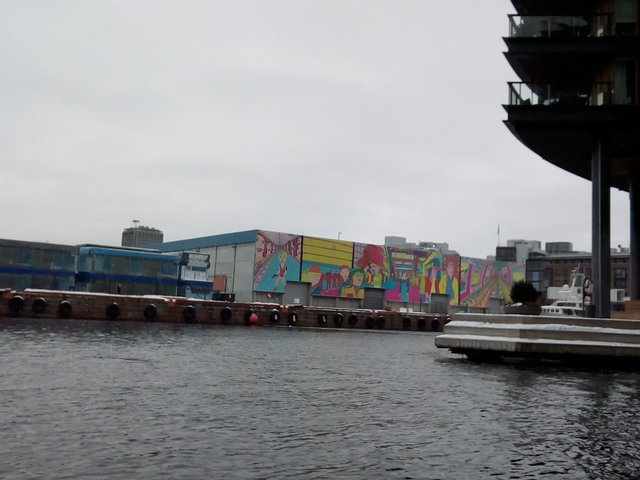
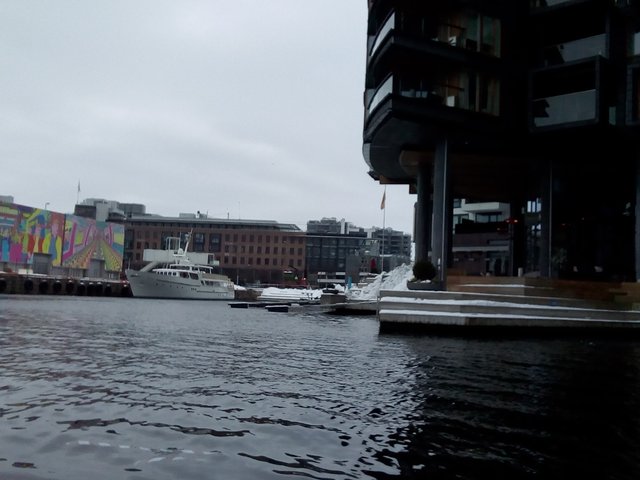
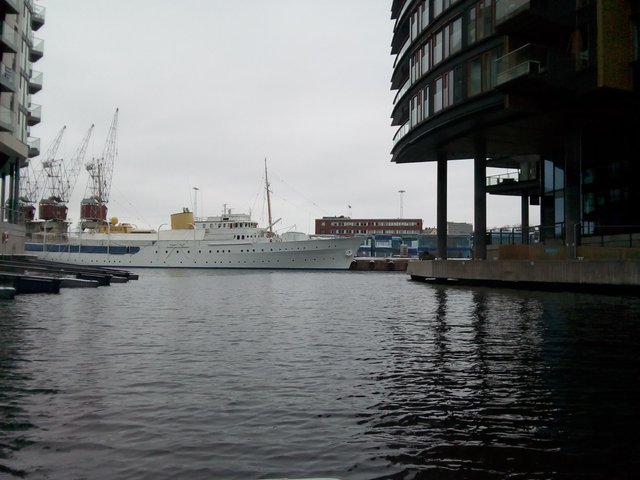
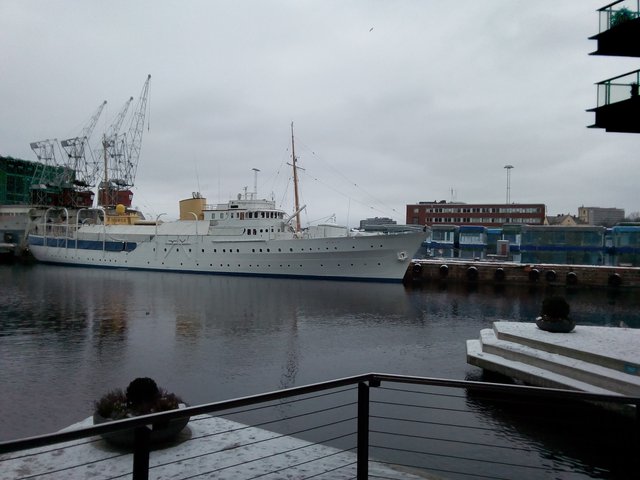
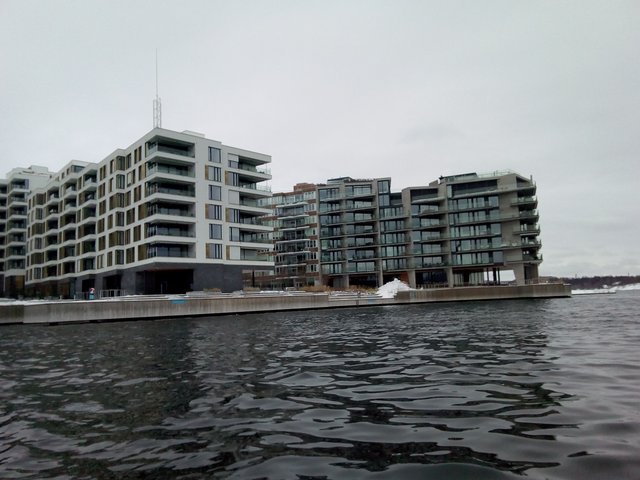
10 years ago a friend lived in Oslo, said that you can live, but saving no she was not. everything went for rent, food, clothes and shoes. once again in the cafe did not go.
Yes, rent is really high - and many immigrants pay for living in conditions that (according to the laws and regulations) aren't suitable for living.
Food, clothes and shoes is possible to find cheaply, as long as one is observant and trying to save money. Baking bread at home can really help, bread is the common staple in Norway, but it's quite expensive actually. Nowadays it's even trivial to order clothes and shoes directly from China. Well, shoes and socks does not work out for me as my feet is too big :-)
Alcohol and services is very expensive - and "services" includes cafés. Earlier we would only eat at home or occasionally in the cheapest kebab/pizza outlets, eventually ordering the cheapest burgers from McDonalds. Now I'm earning relatively much on my crypto trading, so I don't mind dining out, and I don't do McDonalds anymore. Exclusive restaurants are still a no-go though.
fast food restaurants ruining health, it is relatively inexpensive, but such a bad food! appreciate your health, do not eat there. good thing you're not eating there now. by the way, I also make bread at home. the children say that it is much tastier than store-purchased. helps bread maker and the slow cooker really saves time.
I actually had no idea that area used to be an industrial zone. Whenever I have visited it just seems like the most obvious thing in the world that it's a luxury residential/commercial zone
Offices, coffee shops, marina and fine dining too, not only residental/commercial - and there is a hotel as well at Tjuvholmen. I believe there is parking garages under the compex as well, I can imagine parking spaces under Aker Brygge being really expensive.
I think it's a very good idea to combine all those things in the same area, and have it all as a pedestrian zone as well.
I think it has become quite common in cities over the past few decades to reinvent industrial areas into multi-functional luxury areas, though I think Aker Brygge is shining through as one of the most successful case stories.
They've tried more or less to copy the concept at Sørenga, which used to be industrial harbour area.
We also have several areas in Oslo that have previously been heavily industrialized that by now have been cleaned up and are idyllic places with nice nature. I've covered two such places in my previous posts, Husbergøya and Steilene. There is also Saraholmen, a place I visit frequently when there is no sea ice there.
I do not like winter. Because there is no profit here. There is a dry cold. The cities snow are more beautiful. living in a beautiful city in winter gives people happiness. It's a city where snow gets better. very interesting in photographs .
Winter without snow is the worst - no profit, indeed. At our latitudes, I think November is the worst month of the year - it's dark, it's cold, it's dirty, there are no plants growing, it's wet, and usually no snow.
In my home town of Tromsø, far north of Oslo, there is even the polar night - sun is below the horizon 24/7, we really need the snow to brighten up the day - but usually there is no snow in November. Nowadays my home town is sadly dominated by car roads, the wet asphalt tends to be completely black, soaking up all the light there is.
It so cold there, woooohoooooo!
how you people are surviving :p
Well as I told you before it's my dream to live in a place like this.
You are making my dream true a little bit by showing images of this beautiful place,
i really appriciate it <3
It is winter season. Everywhere in snow. So time to photography and enjoy the winter. Take care and cheers.
Norway is a dream city for tourist...
Great photography @tobixen
I really like your photos, the place is amazing and everything that happened in previous years. I like to travel a lot, and to know about the places where I would like to go or where I have gone. Very good publication